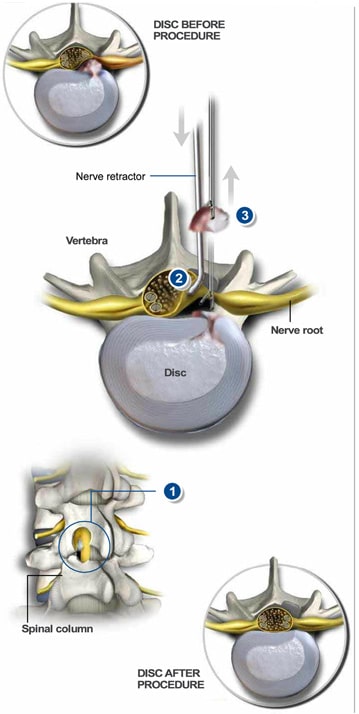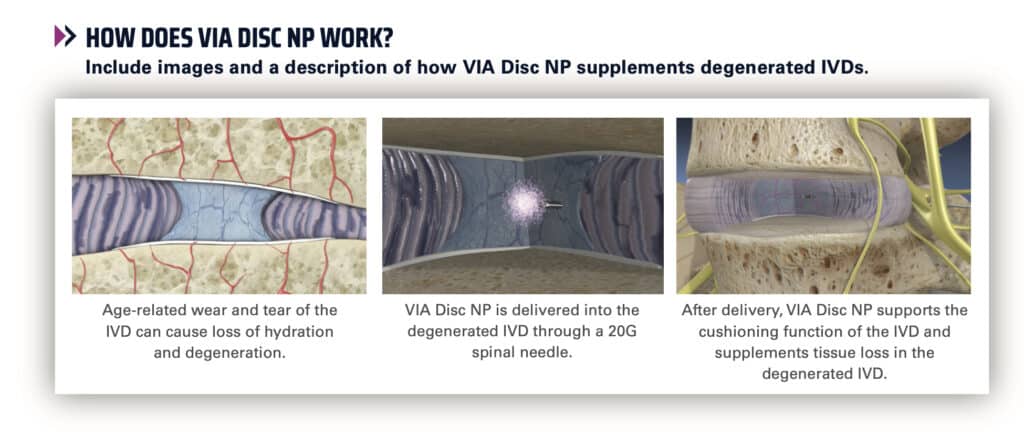Lumbar Disc Microsurgery
Most often, this minimally invasive surgery — also called a lumbar microdiscectomy — is used to treat a herniated disc. The procedure is actually more effective for treating leg pain than lower back pain, because the root of the pain is in the lumbar area of your back.
Lumbar disc microsurgery removes only the herniated portion of your disc. The surgeon uses a microscope and tiny instruments to minimize the trauma to the surrounding tissue. The surgeon removes only the part of the disc that’s compressing your nerves, preserving most of your disc.
Sciatica, often caused by a compressed or impinged nerve in the lumbar area of your spine, can result in serious leg pain. A lumbar disc microsurgery can effectively treat sciatica when a conservative approach has failed.
OVERVIEW
This minimally invasive technique removes the herniated section of a damaged disc in your spine. It is 95 to 98 percent effective in eliminating sciatica caused by nerve root impingement. The procedure is described below. Talk to your surgeon about the risks and what to expect during your recovery.
 1. OPENING THE LAMINA
1. OPENING THE LAMINA
After creating a small incision directly over the herniated disc, your surgeon creates a small window in the lamina to gain access your spinal canal. See illustration 1. With the aid of a microscope, the surgeon can see the pinched nerve root and the herniated disc through this opening.
2. MOVING THE SPINAL CORD
Using a nerve retractor (illustration 2), your surgeon gently moves your spinal nerve away from the herniated disc, giving him the space to do his work.
3. REMOVING THE HERNIATION
As shown in illustration 3, the surgeon identifies and removes the herniated section of the disc. This action immediately stops the pressure the disc exerted on the nerve root, which also eliminates your leg pain. The surgeon leaves the healthy disc material in place to continue to act as a cushion between your vertebrae.
4. RECOVERING FROM THE PROCEDURE
Once the surgeon removes his tools, he moves your spinal nerve back to its normal position. He then closes and bandages the incision. Microsurgery decreases any post-operative pain you may experience. It also helps speed your recovery because fewer tissues were involved in the procedure.
You can do deskwork in one to two weeks. More physically demanding jobs require four to six weeks for a full recovery. In either case, you can recuperate in your own home.
SURGICAL PROCEDURES

